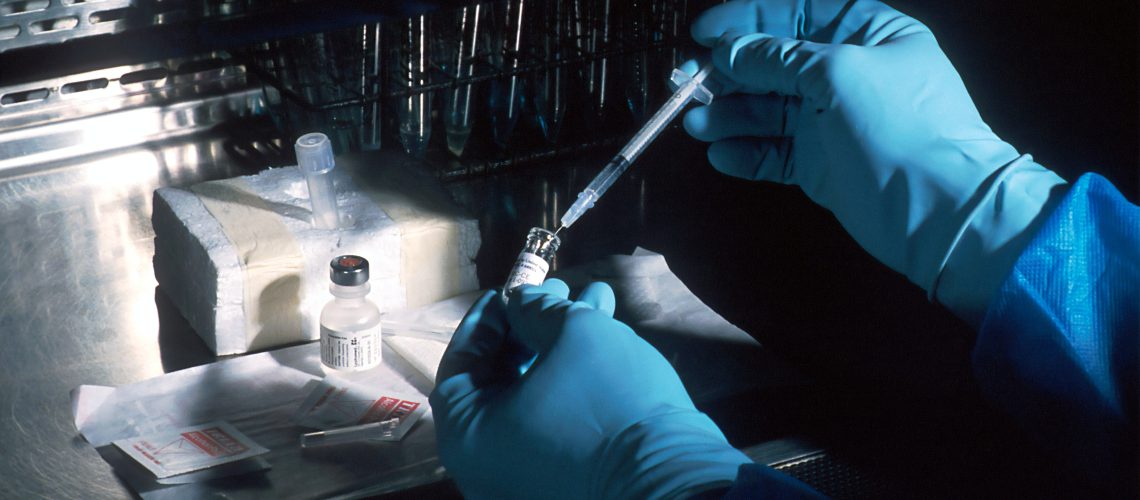The Law is never static, it’s always changing. And with the birth of DNA evidence, this has never been more true. With the technological boom of the last half-century, there has come an increase in evidence, or at least potential evidence. Fingerprints, DNA, databases, phones, data, etc, etc. Both prosecutors and criminal defense lawyers have an ever-growing toolset.
The Law is also complex. Movies and television have created false representations of how a lot of the criminal defense procedures work. Between what Miranda Rights are and aren’t, whether or not your phone can be searched by police, and how DNA evidence really works, there are a ton of misconceptions most people hold. Not to mention the actual procedure a criminal case takes which might seem like inside baseball to the majority of people.
What is DNA?
DNA, or Deoxyribonucleic Acid, is the basic genetic building block of life. It consists of 3 billion chemical bases that tell our cells, tissues, and organs, how to function. DNA looks like a twisted ladder and one of its most important functions is its ability to replicate. Cells split and clone themselves and DNA needs to clone itself into these new cells.
A Brief History of DNA Evidence
99.9% of the DNA we all share is too similar to accurately distinguish between a group of people. However, that 0.01 sliver which is unique to an individual is what is looked at when using DNA as an identifying marker. That tiny bit of difference is what helps courts determine if one person is guilty or innocent. Of course, there has to be a context to the evidence. Just because DNA is found doesn’t mean anything unless an accurate depiction of a crime or situation can be constructed.
When Was DNA Evidence First Used?
DNA was discovered between the 1860s and 1960s. In the 1860s a Swiss scientist first coined what would become the term Nucleic Acid. Throughout the next 100 years, various scientists contributed to the field of genetics. This culminated in the 1962 Noble Prize in Medicine to an American and a Brit for their discoveries related to how DNA transfers information in living things.
The first time DNA was used to solve a crime was in 1986, just a few years shy of the 100th anniversary of the first use of fingerprints as an identifier. In ‘86, a teenager in England was accused of a terrible crime, assaulting and murdering two teenage girls. This young man had learning disabilities and even admitted to committing the crime. 5,000 individuals in the area where the crime happened submitted DNA voluntarily to help police find the real suspect. One person bragged about submitting a false sample. He was reported and police obtained a real sample from him. The sample came back a positive match and thus DNA profiling for criminal cases was born.
How DNA Exonerates Wrongfully Convicted People
Since that first case in England, this tool has been used all over the world as evidence in court. In the United States, the Innocence Project, which is a non-profit organization dedicated to helping wrongfully convicted individuals, has exonerated 375 individuals based on DNA evidence.
Evidence and Criminal Defense
During a criminal investigation, DNA can be gathered from a number of places. We leave evidence everywhere, when we touch a surface, shed skin or hair, etc. Biological samples are left everywhere but not all samples have enough genetic information to accurately distinguish between people.
DNA evidence can be considered more accurate than fingerprint or eye-witness statements. But, like all evidence, there is the possibility of human error interfering with its accuracy. There’s something known as the ‘chain of custody’ when it comes to DNA evidence. This tells the timeline of where and how the evidence was procured and handled.
A criminal defense lawyer can try and poke holes at a prosecution’s strategy. For example, if there is no DNA evidence at a crime scene that can establish doubt in whether or not a person is guilty. Conversely, if a person’s genetic fingerprint is at a crime scene but the context behind the evidence being there is not solid, then a lawyer can use that for their client’s defense.
Respected Atlanta Criminal Defense Lawyers
DNA evidence can benefit both prosecutors and defendants. Juries can find this type of evidence compelling and a lack thereof can form a basis for acquittal. A defense lawyer can use DNA evidence as the backbone of a criminal defense strategy. In any case, retaining an attorney is crucial if you wish to maximize your chances of a beneficial outcome. Each case is unique but The Arora Law firm’s experience helps prepare us for even the most difficult cases.
For these reasons and more we always recommend hiring a criminal defense attorney to fight for your rights. Being accused or charged with a crime is often times a person’s most confusing and scariest moment. Having experienced legal counsel by your side is just what you need to maximize your chances at a fair outcome. Manny Arora and The Arora Law Firm are some of Atlanta’s most recognized legal professionals. With our decades of combined experience, you’re bound to be in good hands.










